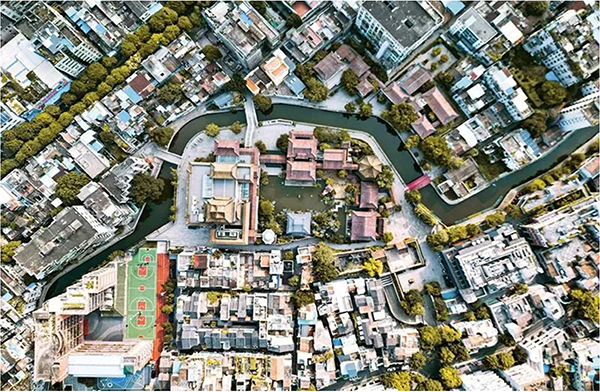


Author | Yang Baojun
President of the Urban Planning Society of China, National Engineering Surveying and Design Master, Former Chief Economist of the Ministry of Housing and Urban-Rural Development
Adhere to joint creation, and the whole society jointly contribute to the great cause of protection
In the work of protecting and preserving urban and rural historical and cultural heritage, the people are not only witnesses and beneficiaries but also active participants. We must adhere to the principle of co-creation, involve multiple parties, and form a united effort. Through various means, we should seek the needs, sentiments, and advice of the people, stimulating the initiative and enthusiasm of all stakeholders and encouraging them to play an active role in the planning, construction, and management of the protection and inheritance of urban and rural historical and cultural heritage.
‘Beijing is a world-famous ancient capital, and its rich historical and cultural heritage is the greatest treasure. Preserving this precious historical and cultural heritage is the duty of the capital city.' This was the clear requirement put forth by General Secretary Xi Jinping during his inspection tour in Beijing on the morning of February 25, 2014. In the protection and regeneration action of Chongyong Street, Beijing has actively practiced the concept of 'co-creation,' consistently carrying out public participation throughout the process and promoting the joint construction, governance, and sharing among diverse stakeholders. Before implementation, it actively sought the sentiments of the people by organizing activities such as the 'Claim Your Street' workshop and public space design competition, developing a public participation app, holding an exhibition of old photos, hosting the Beijing International Design Week, and organizing New Year's activities in Dongsi neighbourhood, thereby 'crowdfunding' wisdom and engaging the entire society. During implementation, it adhered to seeking the needs and advice of the people. Through ‘co-construction by residents’, it practiced the concept of jointly creating a better environment and a happier life, establishing a ‘unified planning and self-construction’ approach for remediation plans, encouraging property owners, users, and property rights units to participate in urban regeneration and transformation, shifting from 'one person design for another’ to 'we design together.' After implementation, it continued to seek feedback from the people, constructing a physical space called 'Chongyong Living Room' and conducting community building activities, resident discussions, salons, and other movements.

Guangzhou is a national historic and cultural city, and Yongqingfang is located on Enning Road in the old district of Guangzhou. This old alley, which had become dilapidated due to its age, has recently undergone meticulous renovations while preserving its historical appearance, thus regaining new life and becoming a popular 'check-in spot.' The image aabove is an aerial photograph of Yongqingfang in the Enning Road historic and cultural district of Guangzhou, taken in June 2023. Provided by the Guangzhou Bureau of Planning and Natural Resources, photo by Chen Zhiyi.
resident Xi Jinping, during his inspection tour of Yongqingfang in Liwan District, Guangzhou, on the afternoon of October 24, 2018, gave important instructions, 'We should highlight local characteristics, focus on improving the living environment, and adopt more refined approaches like micro-renovations, which require the precision of 'embroidery.' We should pay attention to the inheritance of civilization and culture, so that the city retains its memory and people remember their roots.'"Guangzhou boasts a continuous urban construction history spanning 2,000 years and is also a pioneer in China's contemporary reform and opening-up. In recent years, Guangzhou has explored the institutional practice of participatory design methods. During the protection and regeneration of Pantangwuyue Street, the city first attempted a 'co-creation' committee mechanism, involving representatives from government, technical professionals, community social workers, residents, merchants, media, and other stakeholders. Throughout the protection and regeneration process, more than a hundred surveys of local residents and observations of daily life spaces were conducted, leading to public discussions and participatory activities. This facilitated positive communication and interaction between new and old residents, achieving multi-stakeholder consultations in planning and construction, and promoting the joint construction and governance of community spaces and environments.
General Secretary Xi Jinping earnestly admonished us, 'Historical and cultural heritage is what our ancestors have left us; we must pass it on intact to future generations.' Since the new era, through the involvement of multiple parties and the gathering of collective strength, the whole society's understanding of fine traditional Chinese culture has significantly increased, the awareness of protecting urban and rural historical and cultural heritage has notably risen, and the concept of protecting, inheriting, and developing urban and rural historical culture has taken root in people's hearts.
We must integrate the protection of historical and cultural heritage into urban and rural construction, place greater emphasis on the protection and inheritance of historical and cultural heritage, and share the rich fruits of the protection and inheritance of urban and rural historical and cultural heritage with the people, propelling urban and rural development toward a brighter future.
Translated by Zhang Chenxi
https://mp.weixin.qq.com/s/6LFGalDHEjiTom7pt8_B4w